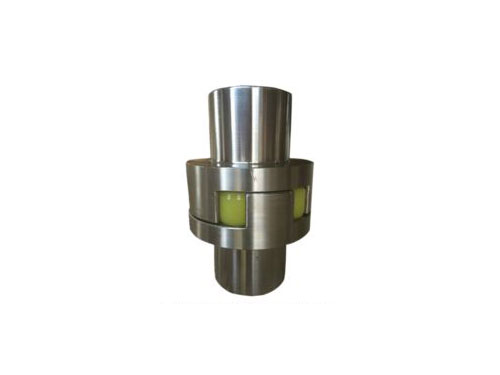 ML plum-shaped elastic couplingML plum-shaped elastic coupling and other coupling...
ML plum-shaped elastic couplingML plum-shaped elastic coupling and other coupling...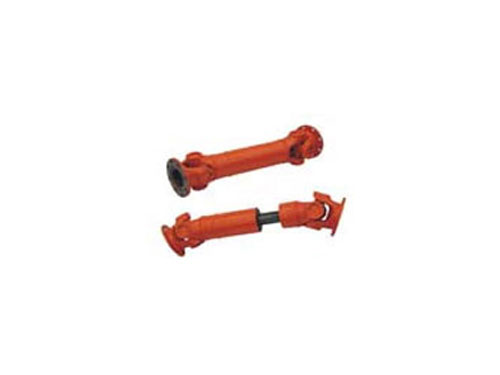 SWP-B type has telescopic short universal couplingDue to manufacturing, installation, load deformation and...
SWP-B type has telescopic short universal couplingDue to manufacturing, installation, load deformation and...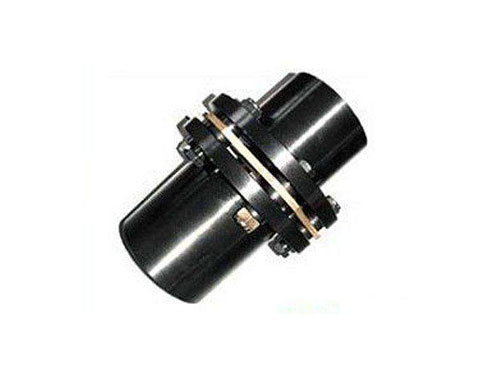 JMⅡ type non-counterbore basic diaphragm couplingJMⅡ type non-counterbore basic diaphragm coupling...
JMⅡ type non-counterbore basic diaphragm couplingJMⅡ type non-counterbore basic diaphragm coupling...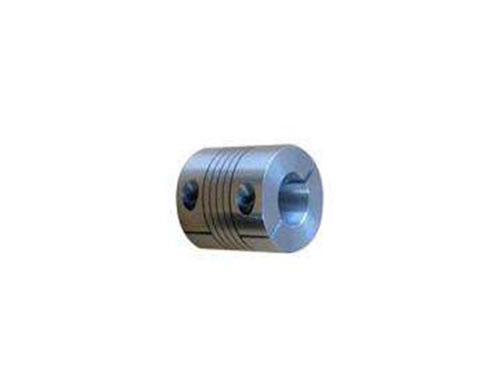 Multi-section clamping diaphragm coupling1. Diaphragm elastic coupling 2. Gaoling...
Multi-section clamping diaphragm coupling1. Diaphragm elastic coupling 2. Gaoling...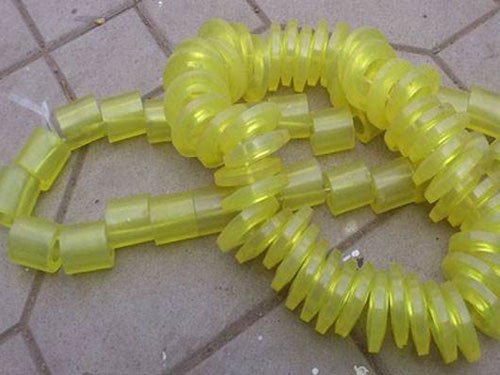 Elastic sleeveThe elastic sleeve uses a number of non-metal elastic...
Elastic sleeveThe elastic sleeve uses a number of non-metal elastic...Briefly describe the three-point metering method for the alignment of the elastic pin coupling
The function of the elastic pin coupling to transmit torque has become an important criterion for coupling selection.For the standard coupling, the allowable torque value has been set for each model. Therefore, when selecting the model, the torque that the coupling actually needs to transmit should be less than the allowable torque of the selected coupling.The torque that the coupling actually needs to transmit is often used to calculate the torque T0.Indicates that it is equal to the theoretical torque T of the coupling multiplied by the working condition coefficient K.Therefore, the above condition can be expressed as: T0=KT.The two shafts connected by the coupling, due to the errors caused during the manufacturing process and the installation process, as well as the deformation of the running process and the influence of temperature changes, will cause the relative position of the two shafts to be misaligned, and it is often impossible to determine the strict Centering.According to whether the coupling has elastic elements, whether it has the ability to compensate various relative displacements, that is, whether it can maintain the connection function and the purpose of the coupling under the condition of relative displacement, the coupling can be divided into rigid couplings, Flexible coupling and stable coupling.The main types and characteristics of the coupling and its role in the transmission system Rigid couplings can only transmit motion and torque, and do not have other functions including flange couplings, sleeve couplings, and clamping shells Couplings, etc.
The heat treatment of the coupling is the operation technology of the metal or alloy in the solid range, through the cooperation of family, heat preservation, and cooling, so that the metal or alloy changes the internal arrangement and the required functions. The heat treatment of the coupling is the modern machinery industry, In the metallurgical industry, improving product quality and extending the service life of machine parts is an indispensable part.
XNUMX. Flexible pin coupling manufacturers introduce common models of couplings
1. Choose the coupling according to the equipment motor to determine the coupling model.When selecting, please note that the rated torque in the data is greater than the system load torque. The rated torque has taken into account the variable load factors during operation, so there is no need to adjust the rated torque value when selecting.When selecting the size of the coupling, please note that the load torque generated by continuous operation should be lower than the rated torque.
2. Determine the coupling model according to the use environment of the coupling.The surrounding working environment is more complicated, such as temperature, humidity, water, steam, dust, sand, oil, acid, alkali, corrosive media, salt water, radiation, etc., which is one of the important factors to consider when choosing a coupling.
3. Determine the coupling specifications according to the shaft length of the shaft hole.Please confirm that the designed aperture and rotation speed conditions cannot exceed the large aperture and high rotation speed in the data.Please change the size when either the large bore diameter or the high rotation speed cannot meet the design conditions.
XNUMX. Briefly describe the three-point table method for the alignment of the elastic pin coupling
(1) Fix the magnetic fixing seat, the measuring rod and the dial indicator on the couplings of the fixed end and the movable end respectively;
(2) Rotate the axis to the 1 o'clock position, and clear the two-thousand-meter indicator respectively;
(3) Turn the axis to the 2 o'clock position and read out the data;
(4) Turn the axis to the 3 o'clock position and read out the data;
(5) Calculate separately;
(6) Loosen the front and rear bolts of the motor, put thick gaskets on the front and rear legs of the motor, move the motor, try to make the two couplings close, and then tighten the front and rear bolts of the motor, at 1 o'clock. Clear the two dial indicator, read the data at the 2nd and 3rd points, compare with the set allowable error value, if the accuracy requirement is not met, repeat the above steps 2-6;
(7) Loosen the front and rear bolts of the motor slightly, keep the dial indicator at 3 o'clock, tap the front and rear feet of the movable end, and the middle of the movable end with a copper rod, and perform horizontal alignment until and when allowed Within error
(8) Tighten the front and rear bolts of the movable end, and the alignment is complete.
When selecting the coupling type, the following items should be considered: the size and nature of the torque to be transmitted, the requirements for cushioning and vibration reduction, and whether resonance may occur.The relative displacement of the axis of the two shafts is caused by manufacturing and assembly errors, shaft load and thermal expansion deformation, and relative movement between components.The allowable dimensions and installation methods are the operating space required for ease of assembly, adjustment and maintenance.There are many factors that affect the selection of the coupling, such as the torque of the equipment, the operation of forward and reverse rotation, the working condition coefficient, the use of the ring and so on.To choose the right coupling that suits your needs, it is related to a series of issues such as the working performance, service life, vibration, noise, energy saving, transmission rate, transmission accuracy, and economic efficiency of the mechanical product shaft transmission, and also related to the machinery Quality of products.